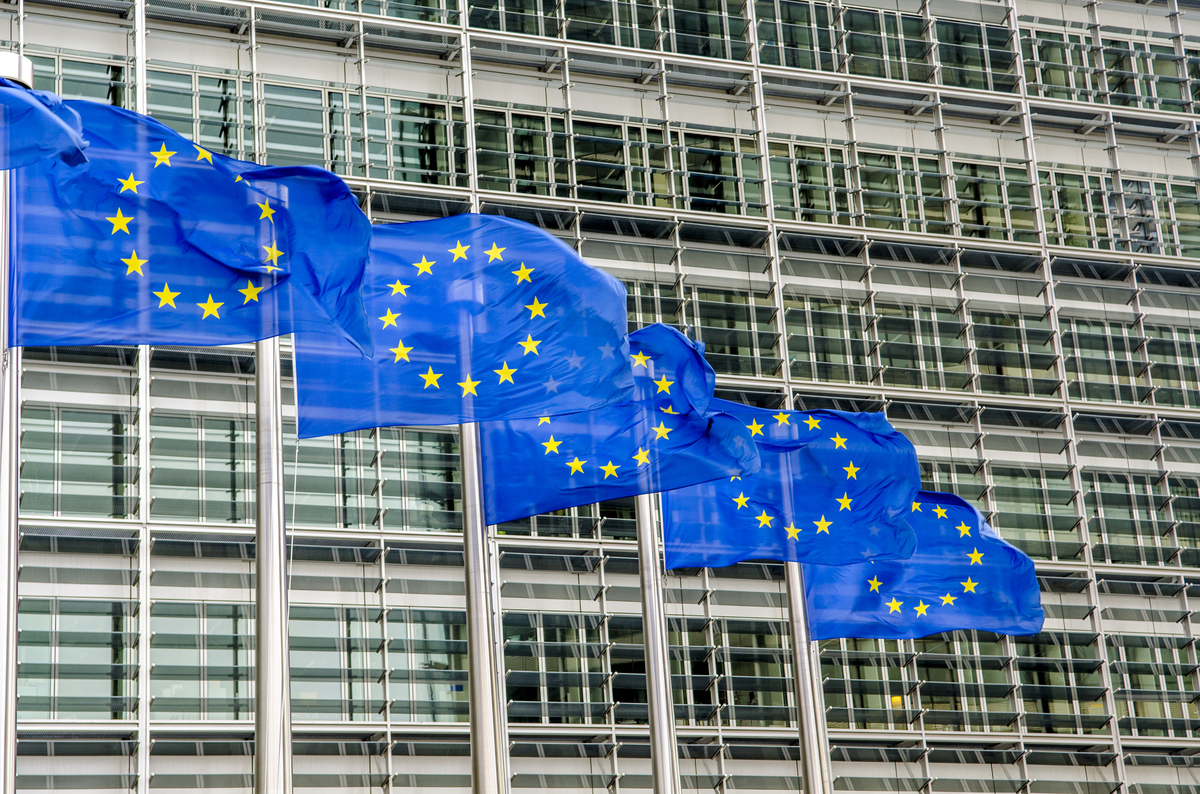EU taxonomy could label LNG-fuelled ships as green investments – T&E
A new taxonomy proposal from the European Commission (EC) will make it too easy for LNG-fuelled vessels to be classified as "green", says environmental organisation Transport and Environment (T&E).
 PHOTO: EU flags outside the European Commission building in Brussels, Belgium. Getty Images
PHOTO: EU flags outside the European Commission building in Brussels, Belgium. Getty Images
The EC recently published a new set of EU taxonomy criteria for economic activities including shipping. The EU taxonomy is a classification system that is aimed at helping companies, investors and policymakers to clarify which economic activities are sustainable.
It primarily serves as a tool to address greenwashing and assist market participants in identifying truly sustainable projects.
According to the draft issued by the EC, sea- and coastal-going ships can be labelled green from 2026 onwards if they are able to meet any of the criteria below:
- Emit zero tank-to-wake CO2 emissions
- Demonstrate a low greenhouse gas (GHG) intensity per unit of energy use
- Outperform the IMO’s Energy Efficiency Design Index (EEDI) phase 3 reference baselines by at least 20 percentage points
T&E argues that some existing ships in the LNG fleet could automatically qualify as green investments based on the third proposed criteria above. It says that some LNG-fuelled ships have attained EEDI values well above the IMO’s EEDI phase 3 baseline, meaning they could easily be labelled as green ships under the EU taxonomy proposal.
The first two criteria were initially pitched on the EC's Platform of Sustainable Finance last October, while the third criteria was added afterwards, T&E says.
The IMO’s EEDI phase 3 mandate entered into force on 1 April 2022 and requires shipyards to calculate EEDIs for newbuilds and ensure that they fall below the allowed limit. T&E points out flaws in the EEDI, arguing that it only covers LNG-fuelled vessels' tank-to-wake CO2 emissions, while not considering lifecycle methane emissions.
When methane slip from upstream and downstream processes are taken into account, then LNG can emit about 19% more lifecycle GHG emissions than MGO over a 100-year period, a report from US non-profit International Council on Clean Transportation (ICCT) shows. Over a 20-year period, LNG has 36% higher lifecycle GHG emissions than MGO.
The ICCT report also suggests that unless methane emissions are taken into account, the majority of LNG-fuelled ships can easily achieve the current EEDI phase 3 mandate.
The EC has asked for feedback on its proposed EU taxonomy amendment to be submitted until 3 May.
By Nithin Chandran
Please get in touch with comments or additional info to news@engine.online






